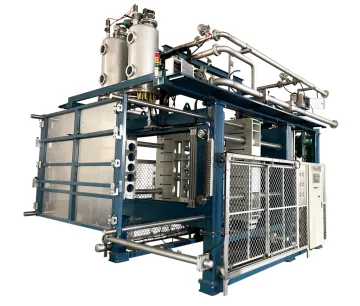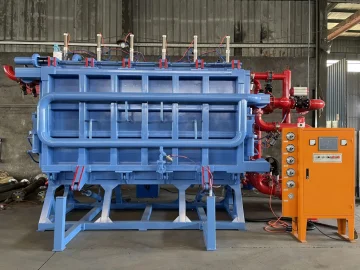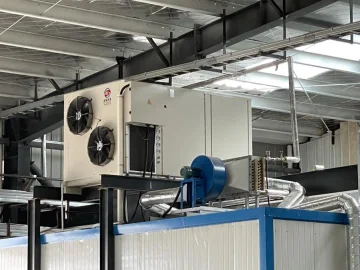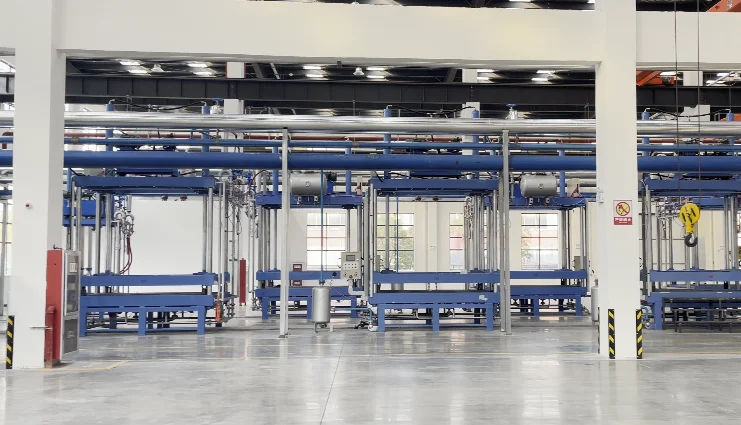What Is an EPS Shape Moulding Machine?
EPS shape moulding machines perform a vital function in the lost foam casting method. They craft exact polystyrene foam models that take the place of conventional wax forms. The lost foam approach depends heavily on superior EPS moulds to guarantee precision in metal casting. These devices utilize expandable polystyrene (EPS) particles. First, the particles expand. Then, they’re shaped and hardened into intricate geometric designs. Later, these designs evaporate when liquid metal fills the mould space. The outcome is a remarkably accurate casting requiring little finishing work.

The Role of EPS Moulding in Lost Foam Casting
The core of lost foam casting rests on the exactness of the EPS models employed in the process. The EPS shape moulding machine ensures each foam model takes shape with spot-on dimensional correctness. This allows for elaborate shapes and fine details in the final metal product. Since EPS models produce no dividing lines or joints, the resulting castings boast excellent surface smoothness and steady dimensions. Sectors like automotive, aerospace, and heavy equipment production depend on EPS shape moulding machines. They use them to create detailed, lightweight parts swiftly and effectively.
Core Components of an EPS Shape Moulding Machine
An EPS shape moulding machine includes several essential elements that collaborate to generate top-notch foam models. The warming setup, often using steam, enlarges the polystyrene particles to the necessary thickness. Hydraulic presses exert force to make sure the foam occupies every section of the mould space. This eliminates gaps or irregularities. PLC (Programmable Logic Controller) automation provides careful oversight of heat, pressure, and timing. It ensures reliability in large-scale output. Plus, cooling mechanisms solidify the foam models before removal. This prevents flaws and secures structural firmness.
How EPS Shape Moulding Machines Work
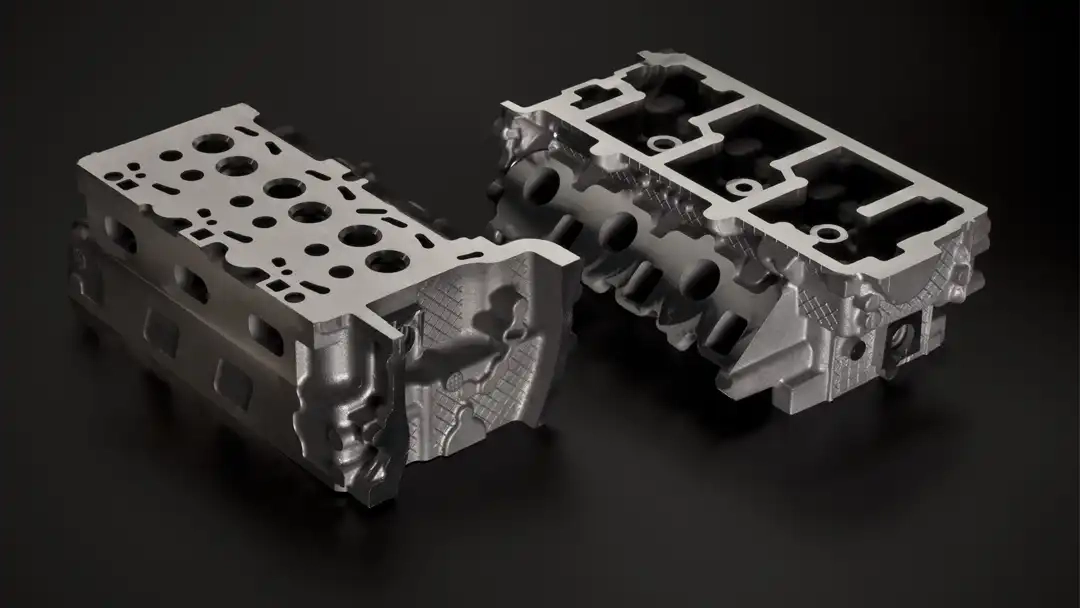
Step-by-Step Process of EPS Foam Moulding
The EPS moulding procedure follows a clear series of steps to produce sturdy, precisely formed foam models. At first, raw EPS particles undergo pre-expansion to reach the desired thickness. Next, these particles get injected into a mould space. There, steam warming triggers further growth and bonding. The hydraulic setup applies pressure, ensuring the particles match the mould’s form. After warming, the mould cools down to firm up the foam structure. Lastly, the completed EPS model is removed, checked, and readied for the lost foam casting process.
Horizontal vs. Vertical PLC Hydraulic Machines
EPS shape moulding machines come in horizontal and vertical styles, each fitting different production demands. Horizontal EPS shape moulding machines units often suit high-volume manufacturing. They save space and handle big moulds well. Vertical EPS shape moulding machines, however, excel in accurate filling and use gravity to aid moulding. This makes them ideal for complex forms needing even particle spread. Both types use PLC automation to sharpen precision and shorten cycle times. They also maintain steady quality across batches.
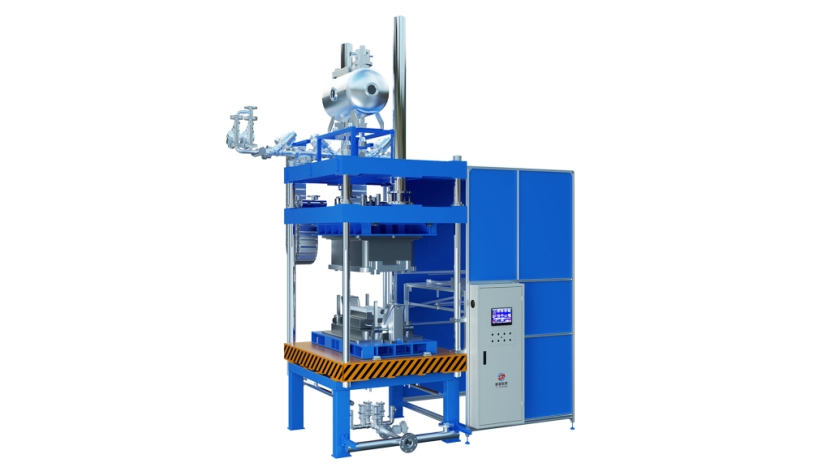
Benefits of Using EPS Shape Moulding Machines
Precision in Complex Geometries
EPS shape moulding machines offer stunning accuracy in lost foam casting models. They achieve tolerances as tight as ±0.1mm. This degree of exactness lets producers craft detailed shapes that traditional casting methods struggle to match. The smooth blending of foam models into the casting process cuts the need for heavy after-work. As a result, it reduces waste of resources and speeds up production.
Cost-Effective Production at Scale
The automation features of modern EPS shape moulding machines greatly boost output efficiency. Compared to hands-on methods, automated units shorten cycle times and lower workforce expenses. They also cut down on resource waste. Fast production cycles let producers expand operations while keeping quality steady. Moreover, EPS models can be made in large quantities with slight differences. This ensures savings across big production runs.
Sustainability in Modern Manufacturing
As industries shift toward greener practices, EPS shape moulding machines aid environmental care. The polystyrene in EPS models is completely recyclable, reducing factory waste. Additionally, energy-saving warming and cooling setups optimize resource use. This makes these machines a smart pick for producers aiming to shrink their environmental impact. Some units even feature closed-loop steam systems. These further enhance sustainability by cutting water and energy waste.
Choosing Reliable EPS Shape Moulding Machine Manufacturers
5 Factors to Evaluate Before Buying
When picking an EPS shape moulding machine, producers must weigh several key points. Technical assistance availability ensures easy blending into production lines. Meanwhile, customization options let machines fit specific casting needs. After-sales support, like upkeep and problem-solving, is crucial for lasting dependability. Compliance certificates show adherence to global quality rules, ensuring steady output and safety. Lastly, a solid grasp of ROI timelines helps producers judge cost-effectiveness and long-term gains before buying new gear.
Why Automation Matters: Fully Automatic EPS Machines
Automation plays a major role in modern EPS moulding tech. It reduces reliance on workers and boosts reliability. Fully automatic EPS shape moulding machines streamline output by using PLC-controlled steps. These steps manage heat, pressure, and timing precisely. This automation wipes out human mistakes and improves repeatability. It also maximizes efficiency in high-volume production. The option to program and save multiple mould settings speeds up switches between different model designs. This increases production flexibility.
Innovations in EPS Moulding Technology
Smart Integration with Industry 4.0
The rise of Industry 4.0 tech has transformed EPS moulding. It enables live tracking and predictive upkeep. IoT-enabled units offer remote diagnostics, letting producers spot issues before they halt output. Cloud-based data gathering sharpens process fine-tuning. It provides insights into energy use, cycle efficiency, and machine output. Smart blending ensures ongoing boosts in productivity and product quality.
Custom Solutions for Niche Applications
For sectors with unique casting needs, tailored EPS moulding solutions are vital. Hangzhou Ouchen Technology offers customized EPS shape moulding machines. These come in horizontal and vertical PLC hydraulic models. They meet specific production demands in fields like automotive, aerospace, and heavy equipment. Advanced customization features—like adjustable mould sizes and variable thickness control—ensure producers get ideal results for particular uses.
Future Trends in Lost Foam Casting Technology
Lightweight Materials and Hybrid Systems
The future of lost foam casting hinges on blending lightweight materials and hybrid setups. EPS models are increasingly paired with 3D-printed cores to form hybrid casting solutions. These enhance structural strength while cutting weight. Such progress lets producers craft high-performing parts for sectors needing both durability and lightness, like aerospace and automotive engineering.
AI-Driven Optimization in Mould Design
Artificial intelligence is reshaping mould design. It uses machine learning tools to predict and remove casting flaws. AI-driven setups study past production data to improve particle spread, reduce shrinkage, and boost overall model stability. This automation sharpens quality control and cuts resource waste. It also streamlines the moulding process for greater efficiency.
FAQs About EPS Shape Moulding Machines
What industries gain the most from fully automatic EPS shape moulding machines?
Sectors like automotive, aerospace, heavy equipment, and construction see big benefits. These machines enable exact production of foam models for lost foam casting. They ensure precision in complex parts while cutting workforce costs and resource waste.
How do I keep an EPS moulding machine running well long-term?
Regular cleaning of steam nozzles and greasing of moving parts are key. Monitoring PLC settings is also essential. Routine checks of hydraulic and air systems prevent failures. Plus, periodic calibration and software updates maintain steady performance.
Can these machines handle custom foam models for small-batch production?
Yes, modern EPS shape moulding machines support flexible mould swaps and precise thickness control. This makes them perfect for prototyping and low-volume output without losing efficiency.
What sets top EPS shape moulding machine manufacturers apart from rivals?
Leading makers offer advanced automation, energy-saving designs, and global technical help. They also provide tailored solutions. This ensures top quality, quicker cycle times, and lasting reliability.
Companies aiming to sharpen their production can explore Hangzhou Ouchen Technology’s lineup of EPS shape moulding machines. These include both horizontal and vertical PLC hydraulic models. Contact Hangzhou Ouchen Technology today to discuss customized solutions for your manufacturing needs. Elevate your lost foam casting operations to new heights!

